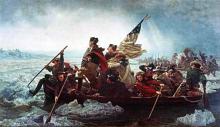People's History of the United States: Part 6
One of the most pervasive misconceptions about our early history revolves around the folklore of the Revolutionary War. In primary grades we learn about our folk heroes and founding fathers, from George Washington and Benjamin Franklin to Paul Revere. Later, in the secondary grades we learn more about the various battles and personalities that came to the fore, but always with the implicit understanding that almost everyone in the colonies wanted the Revolution. In fact, in a number of textbooks the message isn't implicit at all, stating that "from all corners of the American colonies men came to pledge their loyalty to Independence." (American History, Pearson Hall). The truth is somewhat more discouraging.


